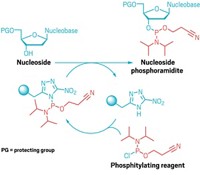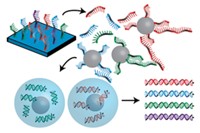Advertisement
Grab your lab coat. Let's get started
Welcome!
Welcome!
Create an account below to get 6 C&EN articles per month, receive newsletters and more - all free.
It seems this is your first time logging in online. Please enter the following information to continue.
As an ACS member you automatically get access to this site. All we need is few more details to create your reading experience.
Not you? Sign in with a different account.
Not you? Sign in with a different account.
ERROR 1
ERROR 1
ERROR 2
ERROR 2
ERROR 2
ERROR 2
ERROR 2
Password and Confirm password must match.
If you have an ACS member number, please enter it here so we can link this account to your membership. (optional)
ERROR 2
ACS values your privacy. By submitting your information, you are gaining access to C&EN and subscribing to our weekly newsletter. We use the information you provide to make your reading experience better, and we will never sell your data to third party members.
Pharmaceuticals
Shaking Paves Way To Clean DNA
Nucleic Acid Chemistry: Method purifies by catching desired product in a gel
by Carmen Drahl
July 28, 2010
| A version of this story appeared in
Volume 88, Issue 31

Using a polymer commonly used for gel electrophoresis, chemists have developed a simple way to purify synthetic DNA. The technique might be applicable to oligonucleotides in development as antisense drugs for cancer and other diseases.
Typically done by chromatography, DNA purification is a bottleneck in antisense drug development. The method Shiyue Fang and graduate student Suntara Fueangfung of Michigan Technological University have devised relies on shaking and extraction instead. They attach a cleavable linker to their desired DNA during the last step of an automated synthesis. This ensures that incomplete DNAs, which are capped during the synthesis, don't get a linker, Fang explains. Through the linker, the team incorporates their product into a polyacrylamide gel (Org. Lett., DOI: 10.1021/ol101316g). Gentle shaking washes impurities away, and then cleaving the linker yields purified DNA.
"The beauty of Fang and Fueangfung's catching-by-polymerization method is that it allows the capture of full-length oligonucleotides from the crude synthesis product without using reverse-phase chromatography or solid-phase extraction cartridges, thus saving time and materials," says nucleic acid expert William H. Pearson of Pearson Chemistry Solutions. But it still doesn't overcome every limitation of established technology, he says. For instance, it still cannot remove sequences where one nucleotide is deleted as a result of incomplete capping, because those will still have a linker.
When the method is scaled up, it could be hard for reagents to access the linker cleavage site, and impurities might become trapped in the gel, says Willi Bannwarth, an expert in oligonucleotide purification at the University of Freiburg, in Germany. Still, "the method is very innovative and differs significantly from all purification strategies out there," he says.
The gel swells in the solvents used to wash away impurities and to cleave the linker, which might help in scaling up the technology, Fang notes. He says his team plans to apply the technique to purifying other biopolymers such as peptides and oligosaccharides.




Join the conversation
Contact the reporter
Submit a Letter to the Editor for publication
Engage with us on Twitter